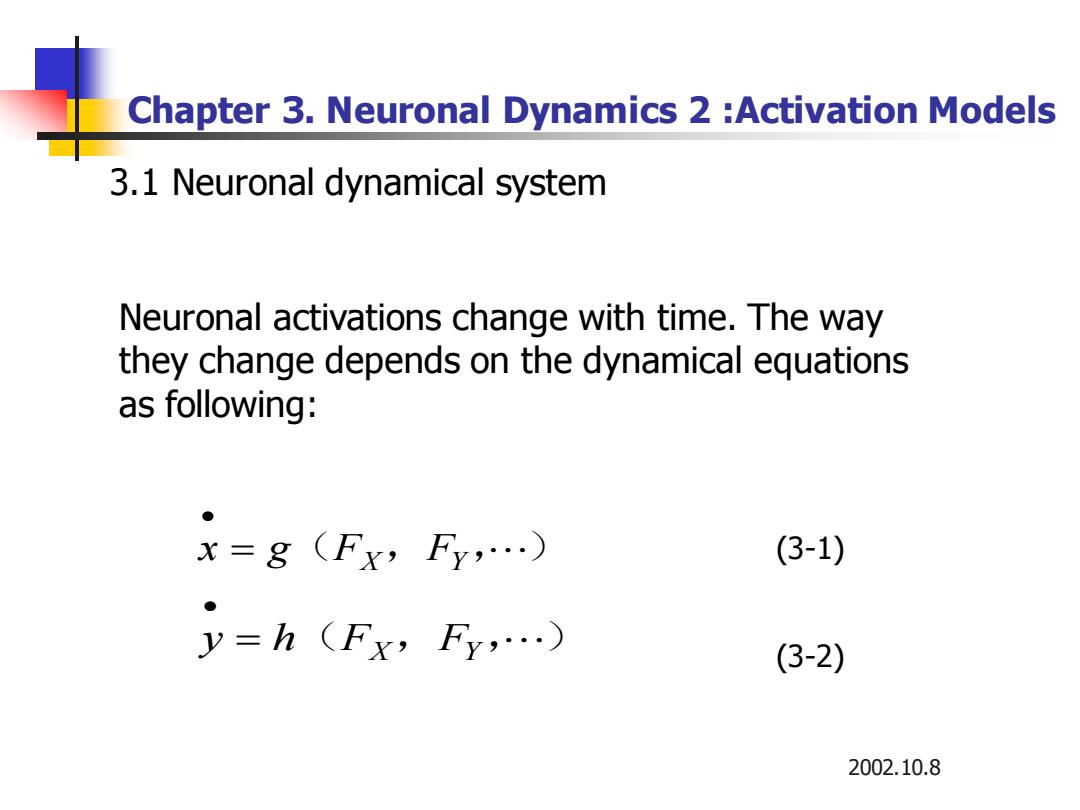
Chapter 3.Neuronal Dynamics 2 Activation Models 3.1 Neuronal dynamical system Neuronal activations change with time.The way they change depends on the dynamical equations as following: ●】 x=g(FX,Fy,…〉 (3-1) y=h(Fx,Fy,…) (3-2) 2002.10.8
2002.10.8 Chapter 3. Neuronal Dynamics 2 :Activation Models Neuronal activations change with time. The way they change depends on the dynamical equations as following: x = g(FX ,FY ,) • y = h(FX ,FY ,) • (3-1) (3-2) 3.1 Neuronal dynamical system
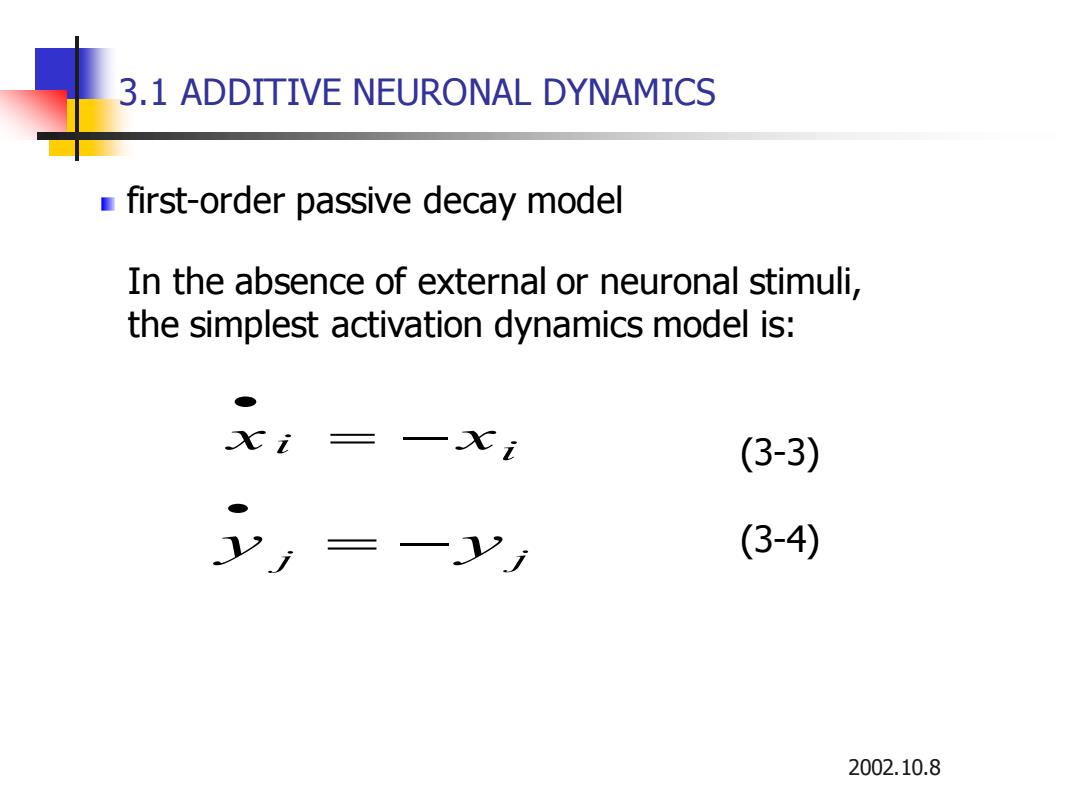
3.1 ADDITIVE NEURONAL DYNAMICS first-order passive decay model In the absence of external or neuronal stimuli, the simplest activation dynamics model is: xi=一xi (3-3) (3-4) 2002.10.8
2002.10.8 In the absence of external or neuronal stimuli, the simplest activation dynamics model is: i xi = −x • y j = −yj • 3.1 ADDITIVE NEURONAL DYNAMICS (3-3) (3-4) first-order passive decay model
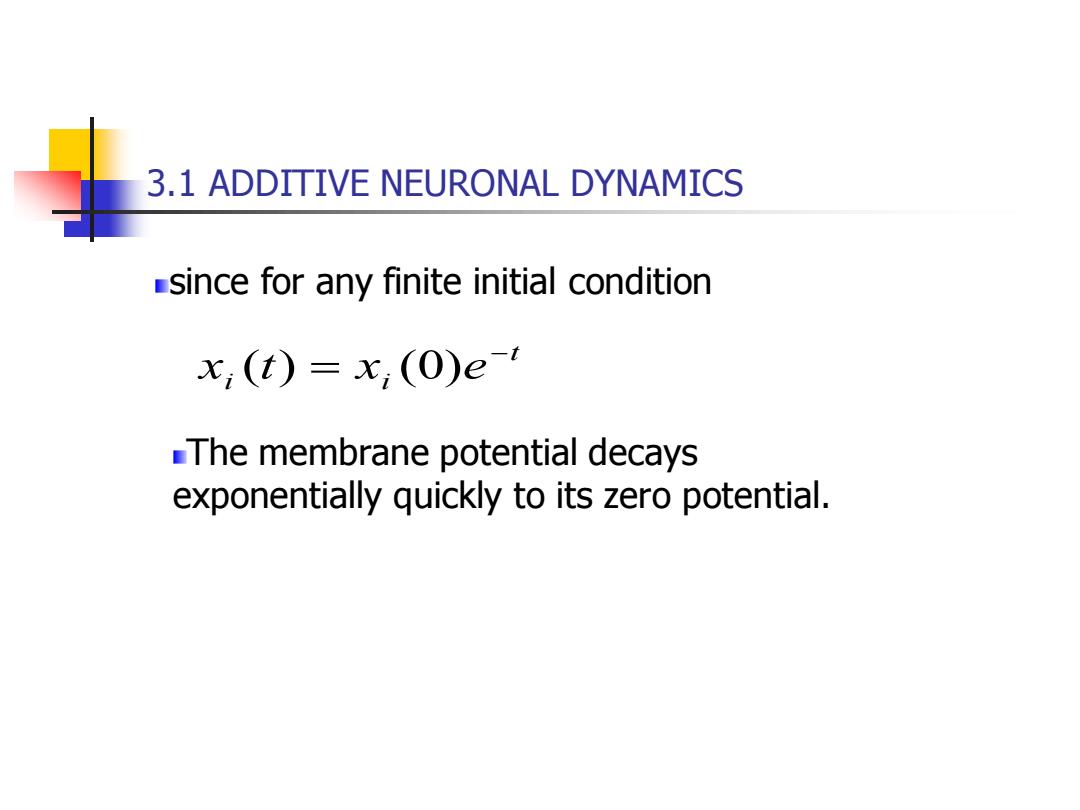
3.1 ADDITIVE NEURONAL DYNAMICS since for any finite initial condition x,(t)=x,(0)et The membrane potential decays exponentially quickly to its zero potential
t xi t xi e − ( ) = (0) since for any finite initial condition 3.1 ADDITIVE NEURONAL DYNAMICS The membrane potential decays exponentially quickly to its zero potential
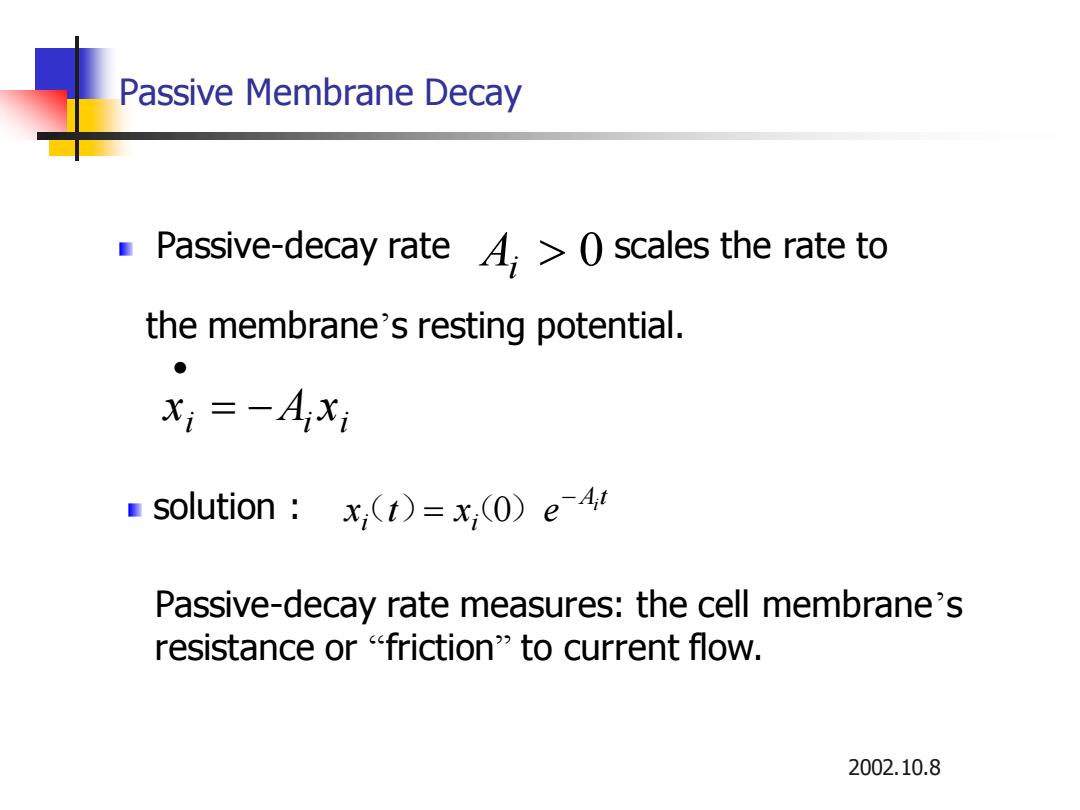
Passive Membrane Decay Passive-decay rate ,>0 scales the rate to the membrane's resting potential. ● xi=-AjXi solution x,(t)=x,(0)e4 Passive-decay rate measures:the cell membrane's resistance or "friction"to current flow. 2002.10.8
2002.10.8 Passive Membrane Decay Passive-decay rate Ai 0 scales the rate to the membrane’s resting potential. solution : Passive-decay rate measures: the cell membrane’s resistance or “friction” to current flow. i i i x = −A x • A t i i i x t x e − ( )= (0)
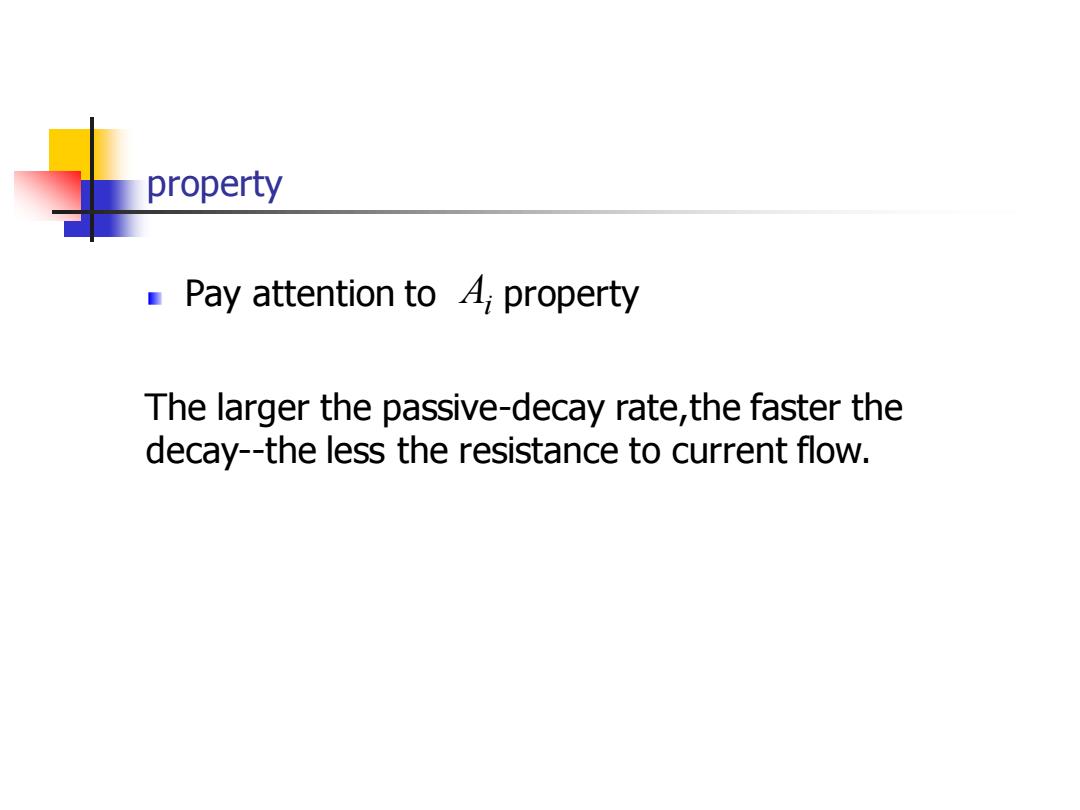
property Pay attention to 4;property The larger the passive-decay rate,the faster the decay--the less the resistance to current flow
Ai The larger the passive-decay rate,the faster the decay--the less the resistance to current flow. Pay attention to property property
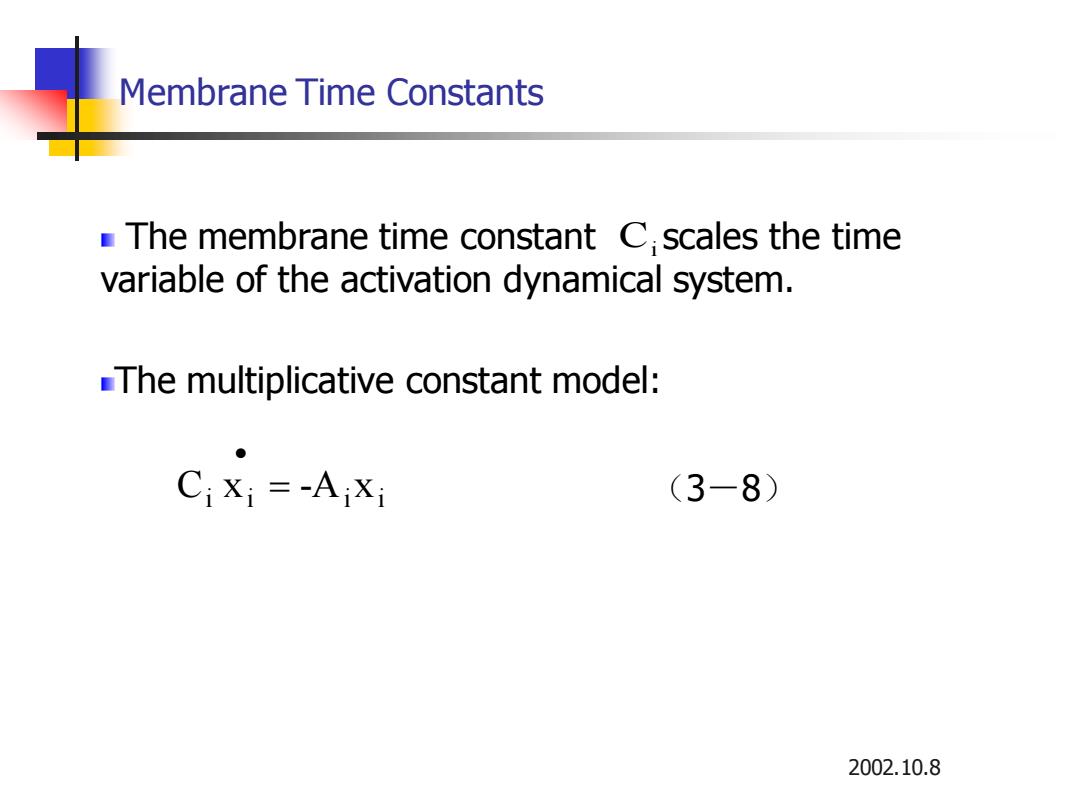
Membrane Time Constants The membrane time constant C scales the time variable of the activation dynamical system. The multiplicative constant model: ● Cixi=-AiXi (3-8)》 2002.10.8
2002.10.8 Membrane Time Constants The membrane time constant scales the time variable of the activation dynamical system. The multiplicative constant model: Ci i i i i C x = -A x • (3-8)
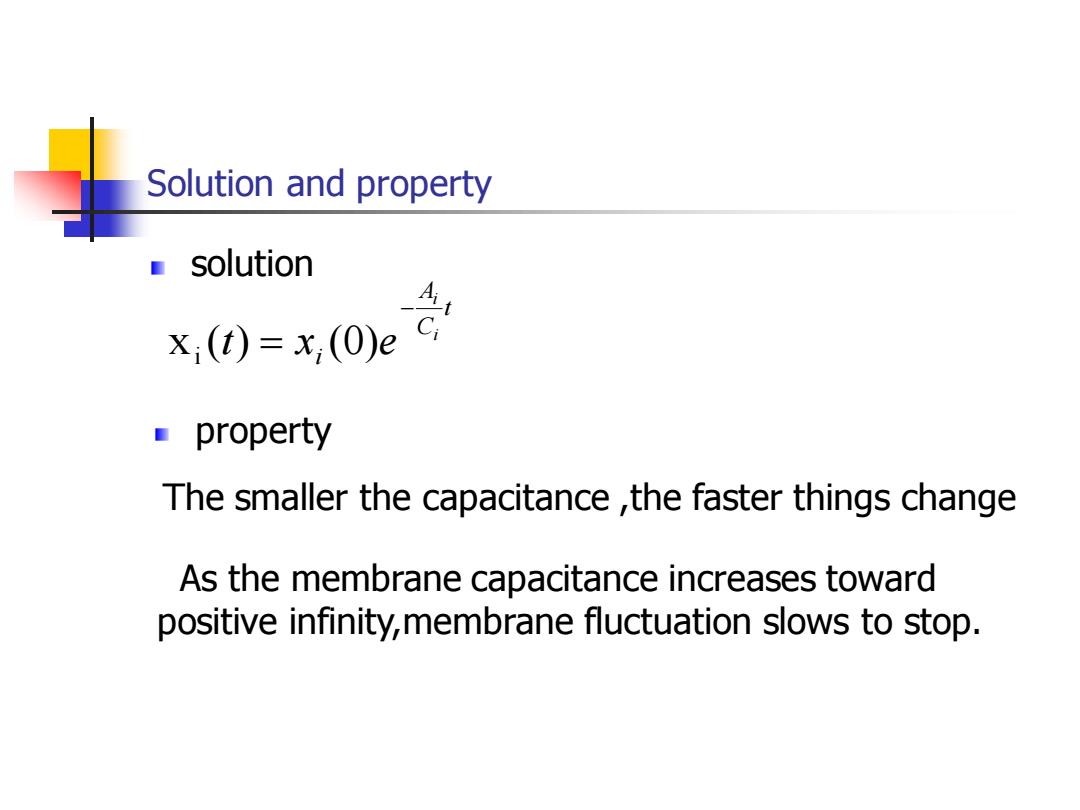
Solution and property ■solution x;(t)=x,(0)e property The smaller the capacitance the faster things change As the membrane capacitance increases toward positive infinity,membrane fluctuation slows to stop
Solution and property solution t C A i i i t x e − x ( ) = (0) i property The smaller the capacitance ,the faster things change As the membrane capacitance increases toward positive infinity,membrane fluctuation slows to stop
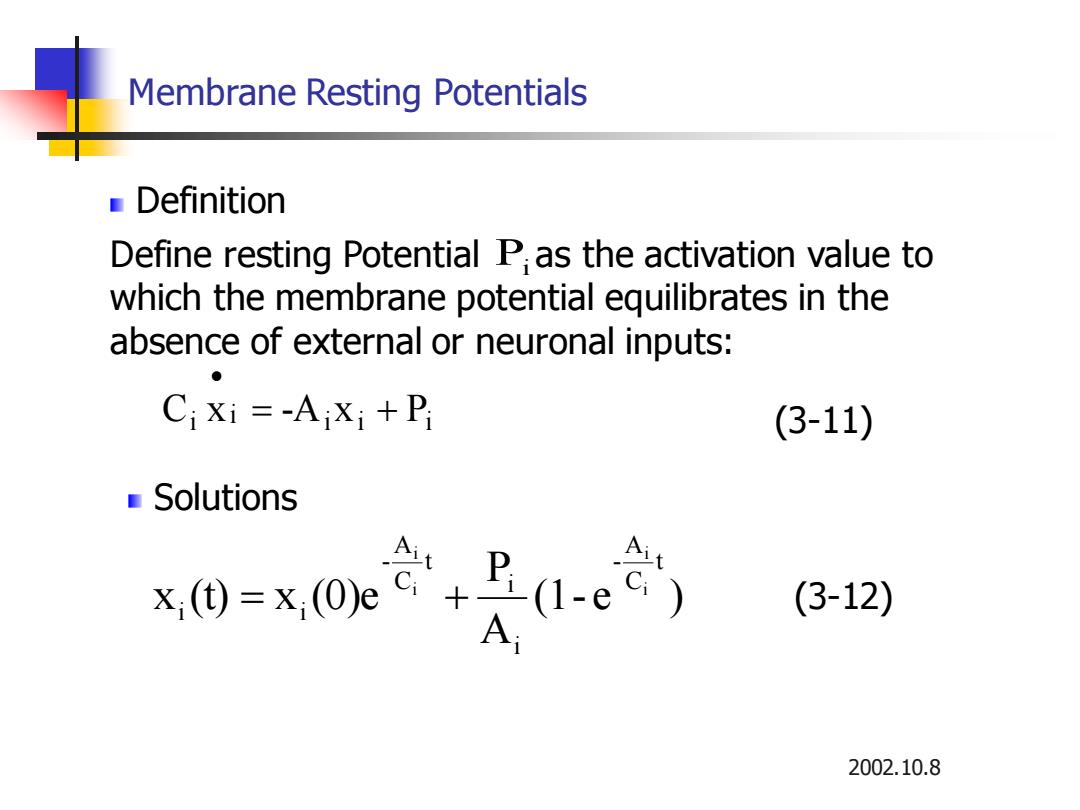
Membrane Resting Potentials Definition Define resting Potential P as the activation value to which the membrane potential equilibrates in the absence of external or neuronal inputs: Cixi=-Aixi+Pi (3-11) Solutions 0x0e产e (3-12) 2002.10.8
2002.10.8 Membrane Resting Potentials Define resting Potential as the activation value to which the membrane potential equilibrates in the absence of external or neuronal inputs: Pi i i i i Ci x = -A x + P • Solutions (1- e ) A P x (t) x (0)e t C A - i i t C A - i i i i i i = + Definition (3-11) (3-12)
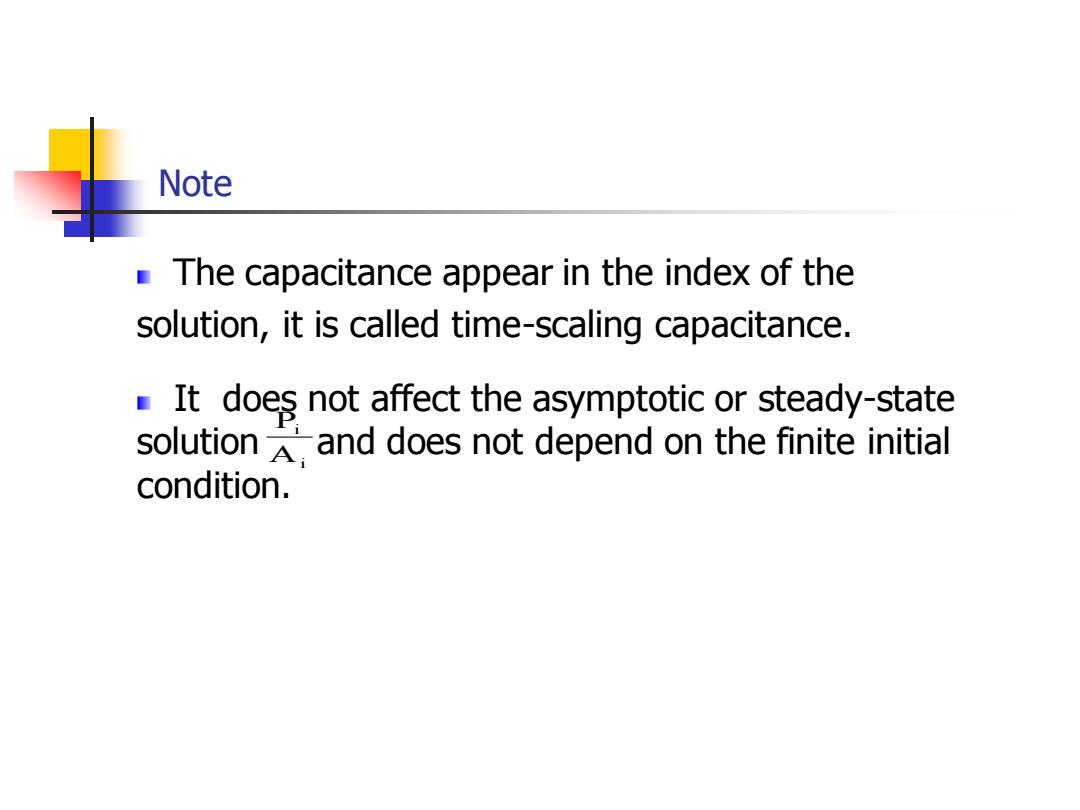
Note The capacitance appear in the index of the solution,it is called time-scaling capacitance. It does not affect the asymptotic or steady-state solutionand does not depend on the finite initial condition
Note The capacitance appear in the index of the solution, it is called time-scaling capacitance. It does not affect the asymptotic or steady-state solution and does not depend on the finite initial condition. i i A P

Additive External Input Add input Apply a relatively constant numeral input to a neuron. ● Xi=-Xi+li (3-13) solution x()=x;(0)et+I(1-et) (3-14)
Additive External Input Add input Apply a relatively constant numeral input to a neuron. i i xi = -x + I • solution x (t) x (0)e I (1- e ) -t i -t i = i + (3-13) (3-14)